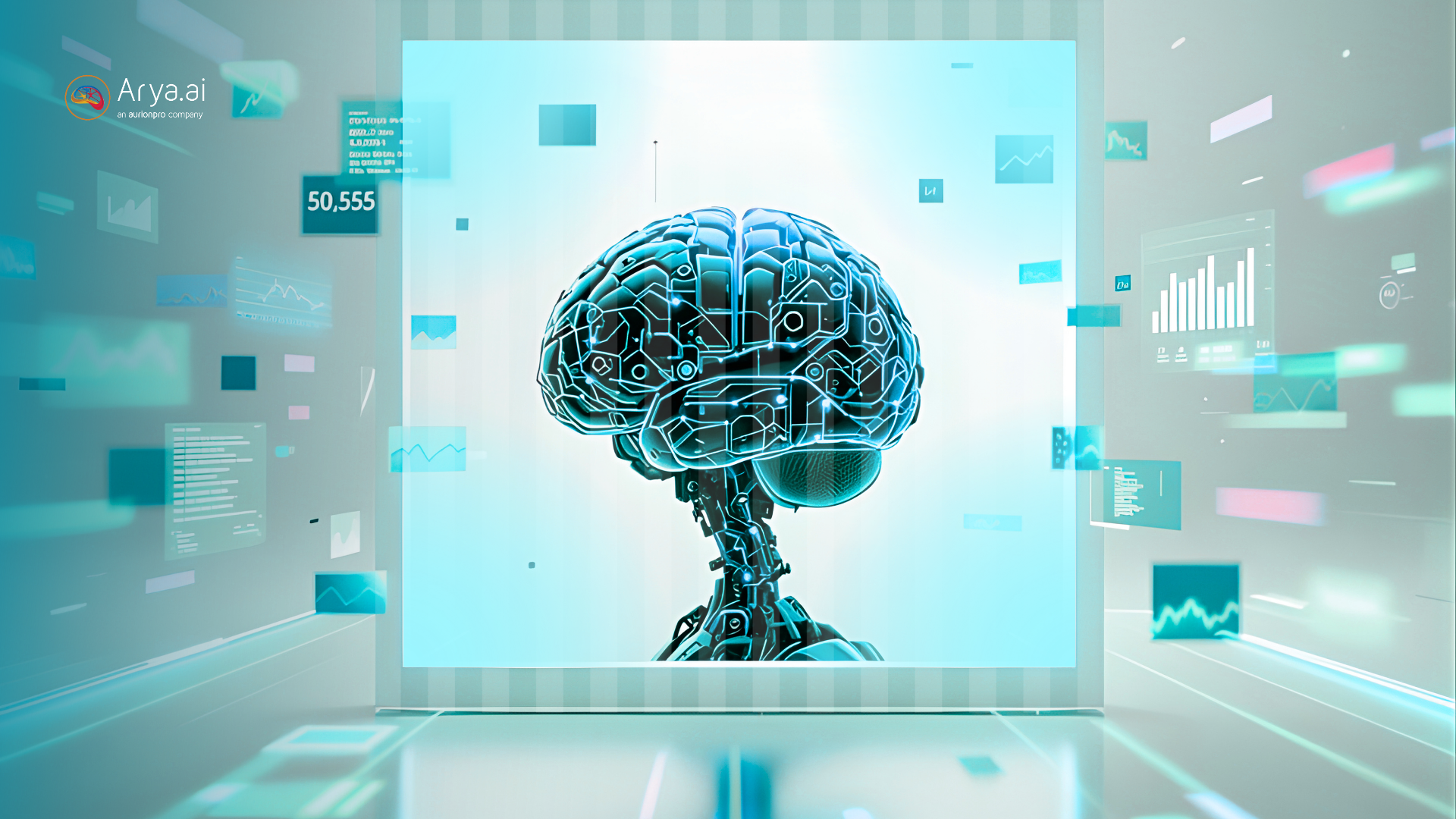
Large Language Models (LLMs) have become essential tools across industries. They can perform a range of tasks, from content generation to decision support. Two types of LLMs have emerged in this landscape: General-Purpose and Domain-specific.
Generic LLMs (e.g., GPT-4) are trained on vast, broad datasets (internet text, books, etc.) and designed for versatility across topics.
Domain-specific LLMs, by contrast, are tuned or trained on specialized data for a particular industry or field (finance, medicine, law, etc.), offering expertise in that niche.
As businesses embrace AI, the distinction between using a general-purpose model versus a domain-tuned model has grown increasingly significant.
Key Differences Across Training, Architecture, Tuning, and Deployment
Let’s pick apart each facet and perform a comparative analysis.
Training Data Scope
Generic LLMs learn from extensive and diverse datasets covering various topics. They could be trained on hundreds of billions of tokens from web pages, books, and articles, giving them broad general knowledge. In contrast, domain-specific LLMs are trained or fine-tuned on domain-relevant corpora. They ingest data specific to an industry or subject—e.g., legal documents, medical journals, or financial filings—to develop a deep understanding of that domain’s terminology and context.

Model Architecture & Size
The model design usually has no fundamental difference; the distinction lies in training data and sometimes scale. Generic foundation models tend to be large (tens of billions of parameters or more) to capture general language patterns.
Domain-specific LLMs can also be large (BloombergGPT has 50 billion parameters), but some are smaller models fine-tuned for targeted data. A smaller specialized model can sometimes outperform a larger general model on in-domain tasks due to its more efficient representation of domain knowledge.
Overall, architecture is usually comparable, but domain-specific training can unlock strong performance even from a moderately sized model by focusing capacity on relevant information.
Fine-Tuning and Adaptation Practices
Generic LLMs are often instruction-tuned on broad datasets (and may undergo Reinforcement Learning from Human Feedback) to make them follow user prompts generally. They are not specifically optimized for any single industry’s data.
Domain-specific LLMs, on the other hand, are created by additional training on domain data or tasks. This can be done by starting with a general model and fine-tuning it on a domain dataset or continuing its training (“continued pre-training”) on specialized corpora.
For example, Google’s Med-PaLM 2 was produced by taking a strong general model (PaLM 2) and then aligning and fine-tuning it on medical questions and knowledge. Such fine-tuning imparts domain expertise as the model picks up terminology, style, and relevant facts of that field, often resulting in more precise and contextually appropriate output.
In the legal domain, CoCounsel (a legal AI assistant) was fine-tuned with industry feedback, involving hours of expert training with authoritative content. It illustrates the resource commitment, but the outcome ensures far greater reliability than a generic model.
Similarly, in healthcare, Google’s Med-PaLM 2 achieved 86.5% accuracy in the U.S. Medical Licensing Exam–style questions, reaching expert doctor-level performance.
Generic models are improving, too. Still, a fine-tuned model often holds an edge on highly specialised evaluations.
That said, specialized models may falter outside their trained domain, and you shouldn’t be using them outside their expertise. This trade-off reflects the classic “generalist vs specialist” difference in AI performance. The table below summarizes some of these differences:

Depending on business needs, one or the other (or a combination) may be appropriate. Next, we examine concrete examples of each in industry settings.
Real-World Examples in Industry
To illustrate these concepts, consider some prominent LLMs and how organizations use them:
Generic LLM Example
OpenAI GPT-4 (and GPT-3.5)
OpenAI’s GPT-4 is a flagship general-purpose model. Businesses across sectors use GPT-4 via Chatgpt or API integration for tasks like report generation, coding assistance, and customer interaction.
Morgan Stanley integrated GPT-4 into its internal knowledge base system for financial advisors and fine-tuned it using proprietary content. 98% of Morgan Stanley’s advisor teams now use it to retrieve information and insights. This showcases how a generic LLM can be adapted to enterprise needs with relatively little setup.
Domain-Specific LLM Examples
BloombergGPT
Bloomberg L.P. created Bloomberg GPT, a 50-billion parameter LLM specifically for the finance domain. It was trained on a massive corpus of financial data (news, filings, market data) combined with some general texts. It is used to power finance-specific NLP tasks such as analyzing financial news sentiment, answering questions about market conditions, and assisting in financial research.
KAI-GPT (Banking)
Kasisto (a fintech company) launched KAI-GPT, which is aimed at conversational banking applications in the banking sector. One early adopter, Westpac (a major bank), implemented KAI-GPT via a “KAI Answers” app to help front-line staff and customers query complex financial policies and product information.
Comparative Performance in Key Business Use Cases
Let’s examine several common business scenarios (customer support, healthcare diagnostics, legal research, and financial analysis) and compare how a generic LLM vs. a domain-specific LLM might perform in each.
Customer Support and Chatbots

In practice, businesses find that a combination of a generic foundation and custom data yields the best support outcome: the LLM’s fluent language plus the company’s factual database.
The downside of a purely domain-specific support model is the effort required to maintain it—if product line updates or new FAQS arise, the model needs retraining or continuous data injection. General LLMS can handle routine support well (and is being used as such).
Healthcare Diagnostics and Advice

Domain-specific LLMs win the race here. A healthcare provider using a domain-specific LLM might deploy it to assist doctors in diagnosing complex cases by suggesting likely causes given a set of symptoms, backed by references to medical literature.
The trade-off is that these models are not widely available and require extensive validation. A healthcare organisation must carefully evaluate any AI system.
Legal Research and Document Analysis

Generic LLMs can be helpful for basic tasks or initial drafts in legal research and document work, but domain-specific LLMs (or hybrids that combine LLMs with legal databases) are becoming the go-to for any serious use due to their higher reliability in citing law and adhering to legal reasoning conventions.
Financial Analysis and Advisory

Financial LLMs are often tuned to be conservative and compliant. For example, do not make unverified predictions (to avoid regulatory issues). Kasisto’s KAI-GPT is explicitly marketed because it has “financially literate” interactions that are accurate and compliant with banking regulations.
Conclusion
The future for businesses isn’t an either/or choice but rather an optimal mix. Combining strengths will be a theme. We foresee architectures where a generic LLM handles the general understanding and cross-domain reasoning while domain-specific components inject precise knowledge.
An AI agent might use a generic model to plan how to answer a complex multi-part query (reasoning through the steps or leveraging an AI API), but call a domain-specific model or database for the portion that needs factual domain knowledge. This is analogous to how human experts work – a generalist might consult a specialist for part of a problem.
Let’s talk and discuss the prospects of integrating the right LLM solution for your enterprise.





.png)





.png)




.png)
.svg)


